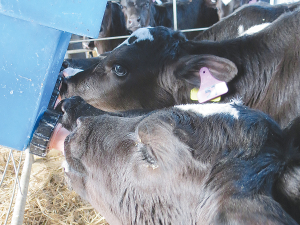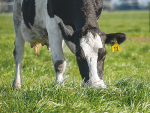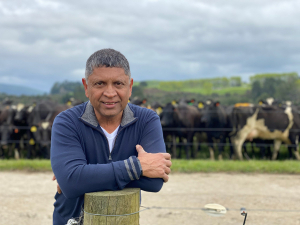To ensure optimal growth, health, and wellbeing of calves, feeding strategies should be considered carefully.
Recent research suggests that feeding a higher daily allowance, split into multiple feeds, is better for calves. When choosing between whole milk and milk replacer, both can be economical, but precautions should be taken. Selecting the best system for your farm will help reduce the stress of calf rearing, and ensure your calves get the best start to life.
To ensure optimal growth, health, and wellbeing of calves, feeding strategies should be considered carefully. Recent research suggests that feeding a higher daily allowance, split into multiple feeds, is better for calves. When choosing between whole milk and milk replacer, both can be economical, but precautions should be taken. Selecting the best system for your farm will help reduce the stress of calf rearing, and ensure your calves get the best start to life.
How often to feed calves?
Feeding strategies should provide calves with enough energy for growth and play, ensuring they can mount a strong immune response, and also meet their behavioural needs.
Recent research shows that feeding calves once a day (OAD) for the first two to four weeks until they can digest solid feed, does not fully provide for their daily nutritional needs. Calves cannot consume enough milk in one sitting to meet their nutritional needs and will experience hunger. While they can tolerate OAD feeding, it's not ideal for their welfare.
Feeding milk twice daily for two to four weeks, allows the calf to consume and digest adequate amounts of milk, and therefore energy, to maintain good health and growth. More energy also supports positive behaviour such as running and playing. Ad lib feeding systems also provide these benefits while conserving labour.
Some farms in New Zealand opt to use automated calf rearing systems, which allow the calf to choose when and how often they feed. This mimics the natural feeding behaviour of a calf on a cow. Properly managed, automated systems have been found to reduce nutritional or non-infectious scours and the need for additional labour.
The National Animal Welfare Advisory Committee (NAWAC) consulted on proposed changes for the Dairy Cattle Code of Welfare from April to June in 2022. In response to recent research, the Committee proposed that calves must be fed twice daily for the first three weeks.
To ensure optimal growth, health, and wellbeing of calves, feeding strategies should be considered carefully. Recent research suggests that feeding a higher daily allowance, split into multiple feeds, is better for calves. When choosing between whole milk and milk replacer, both can be economical, but precautions should be taken. Selecting the best system for your farm will help reduce the stress of calf rearing, and ensure your calves get the best start to life.
Whole Milk or Milk Replacer?
Calves can be reared economically on both whole milk or high quality, reputable milk replacers. In seasonal dairy systems there is often an abundance of surplus milk over spring, and many farms cannot justify the use of milk replacers on economic grounds.
Raw milk is a high-risk pathway for the spread of Mycoplasma Bovis (M. bovis) and certain other infectious diseases. Ensure any milk you sell or purchase is traceable by completing a feed declaration form.
There may be other drivers for farmers to use milk replacers, including:
- Surplus milk is not readily available
- Milk prices are high
- Prevent infection from the herd
- Control of diseases such as M. bovis and Johne's
- Automated calf feeding systems
When choosing to use a milk replacer, calves need time to adapt to the new diet. This can be achieved by initially mixing replacer with colostrum/whole milk to let them adjust between the two feeds. Consistency is key to the success of milk replacers. Always read the label and mix according to the directions.
Automated calf feeding systems can achieve good results with milk replacers, as the preparation and mixing is consistent. Delivery to the calf and cleaning of the system is often easier and works better with freshly mixed milk powder.
Choosing Replacers
Protein and fat are two key components of your feed that should be considered when comparing milk replacers.
Protein
Protein content and source of protein in milk replacers can vary significantly. Calves respond best to dairy-based proteins compared to plant-based proteins. Not all milk replacers will state the protein source, so ensure that you use reputable products that have proven results when feeding young calves.
Fat
Milk replacers commonly provide less fat than whole milk, ranging between 18-22% on a dry matter basis.
Article - DairyNZ


















